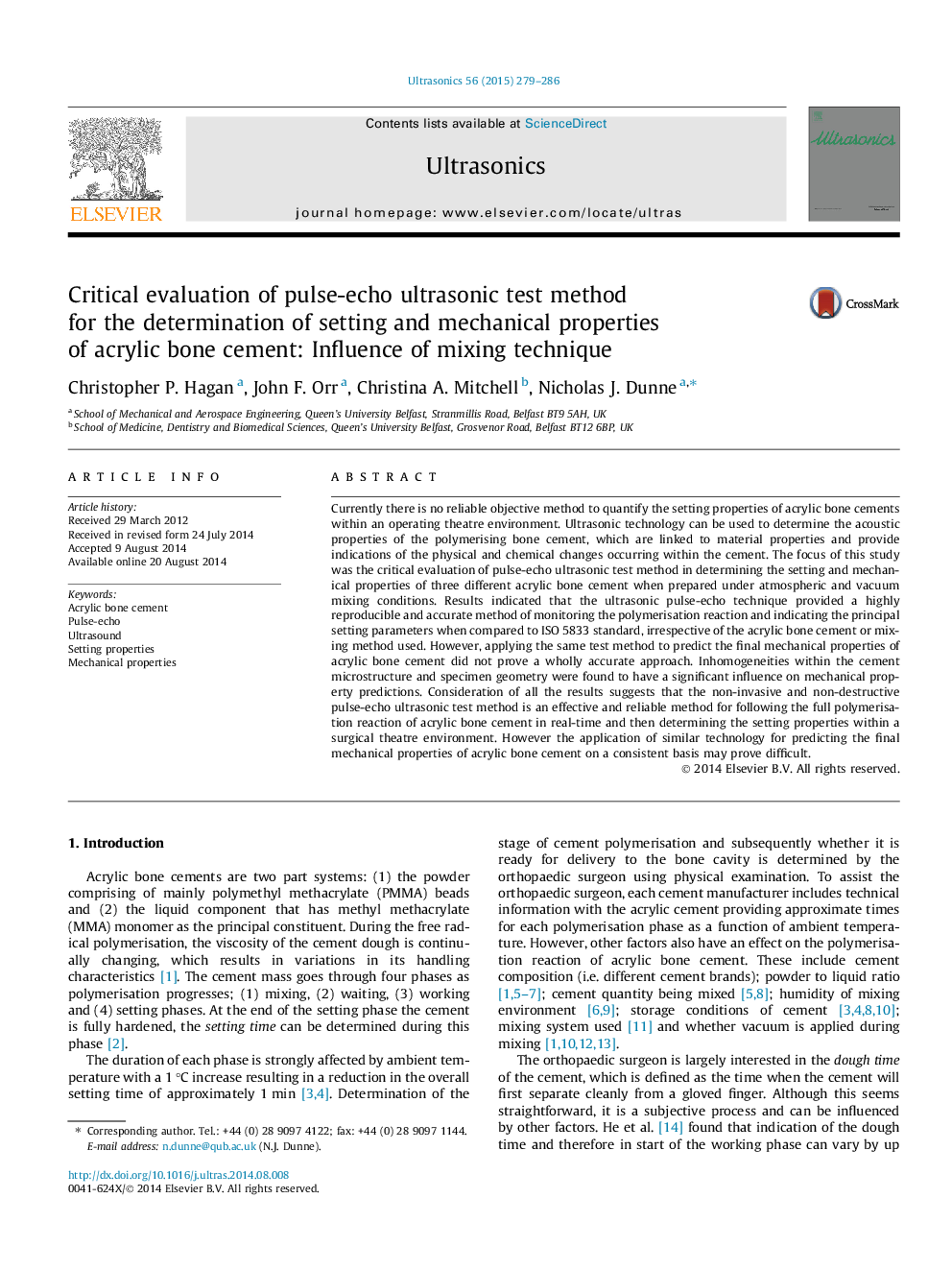| Article ID | Journal | Published Year | Pages | File Type |
|---|---|---|---|---|
| 8130648 | Ultrasonics | 2015 | 8 Pages |
Abstract
Currently there is no reliable objective method to quantify the setting properties of acrylic bone cements within an operating theatre environment. Ultrasonic technology can be used to determine the acoustic properties of the polymerising bone cement, which are linked to material properties and provide indications of the physical and chemical changes occurring within the cement. The focus of this study was the critical evaluation of pulse-echo ultrasonic test method in determining the setting and mechanical properties of three different acrylic bone cement when prepared under atmospheric and vacuum mixing conditions. Results indicated that the ultrasonic pulse-echo technique provided a highly reproducible and accurate method of monitoring the polymerisation reaction and indicating the principal setting parameters when compared to ISO 5833 standard, irrespective of the acrylic bone cement or mixing method used. However, applying the same test method to predict the final mechanical properties of acrylic bone cement did not prove a wholly accurate approach. Inhomogeneities within the cement microstructure and specimen geometry were found to have a significant influence on mechanical property predictions. Consideration of all the results suggests that the non-invasive and non-destructive pulse-echo ultrasonic test method is an effective and reliable method for following the full polymerisation reaction of acrylic bone cement in real-time and then determining the setting properties within a surgical theatre environment. However the application of similar technology for predicting the final mechanical properties of acrylic bone cement on a consistent basis may prove difficult.
Related Topics
Physical Sciences and Engineering
Physics and Astronomy
Acoustics and Ultrasonics
Authors
Christopher P. Hagan, John F. Orr, Christina A. Mitchell, Nicholas J. Dunne,
